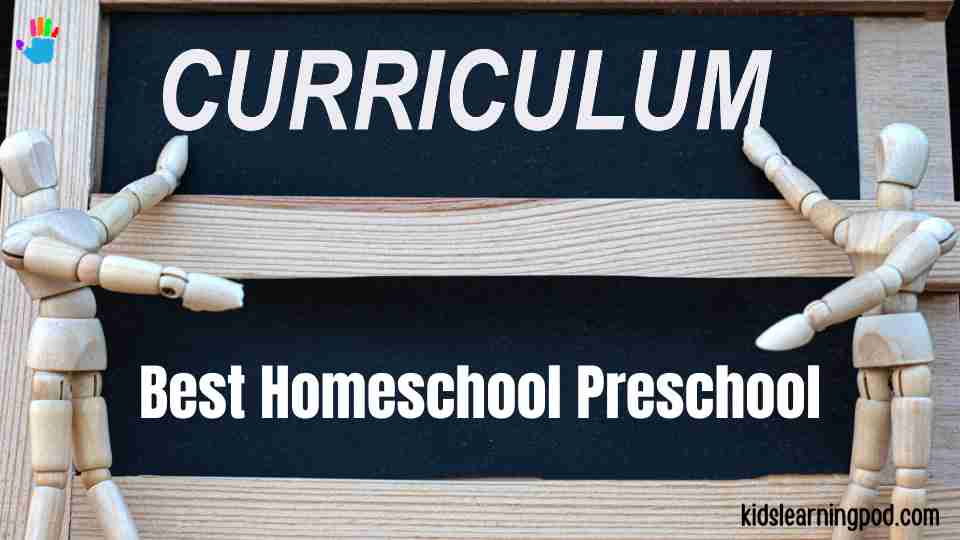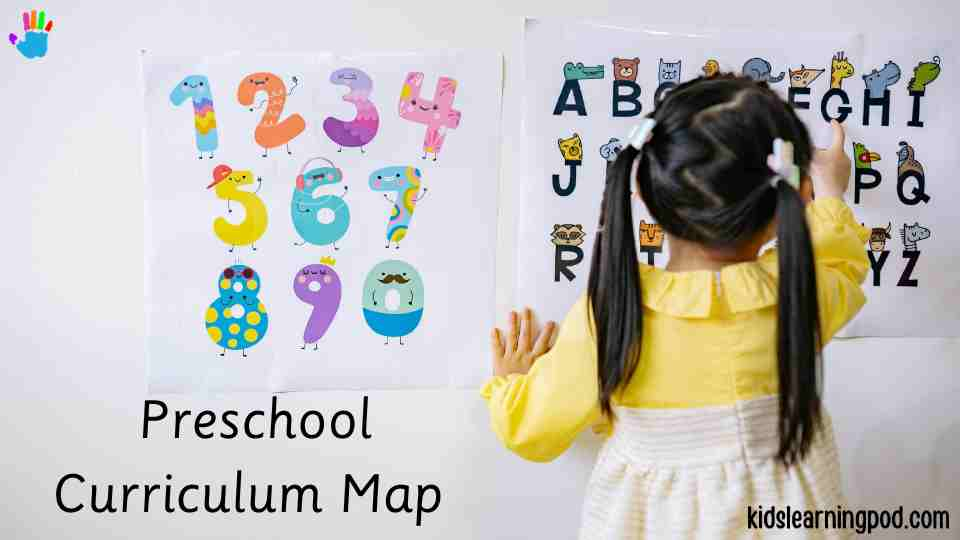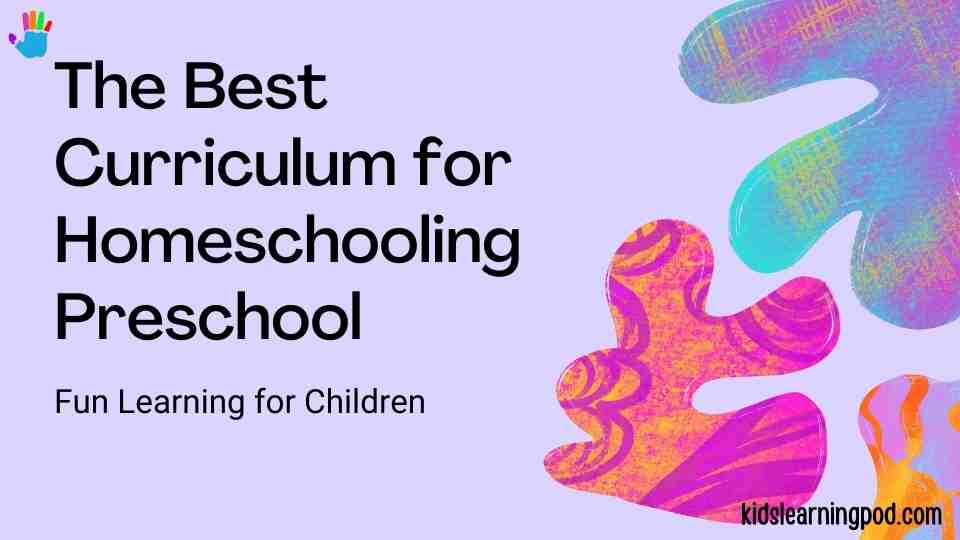Download Curriculum for 1 year olds: Homeschool Curriculum
Homeschool curriculum usage has become an increasingly popular choice among parents, teachers, and educators in recent years. Whether due to concerns about traditional school environments, the desire for a more tailored educational experience, or the flexibility it offers, the shift towards homeschooling is undeniable. This blog post aims to provide an in-depth guide on creating a homeschool curriculum that suits your child’s unique learning needs. From understanding what a homeschool curriculum entails to choosing the right resources, this comprehensive guide will help you every step of the way.
The Importance of Homeschooling

Homeschooling offers a unique opportunity to craft an educational experience that aligns perfectly with your child’s needs and interests. Unlike traditional schooling, homeschooling allows for individualized instruction, which can significantly enhance a child’s academic growth. It’s essential for parents and educators to recognize the potential benefits of homeschooling and how it can positively impact a child’s education.
Personalized Learning
One of the most significant benefits of homeschooling is the ability to provide personalized learning experiences. Traditional classroom settings often follow a one-size-fits-all approach, catering to an average pace and style of learning. However, every child is unique, with their own strengths, weaknesses, and preferred learning methods. Homeschooling allows parents to tailor the curriculum and instructional methods to suit their child’s specific needs. This means that topics can be adjusted to match the child’s level of understanding, and alternate approaches can be tried if a particular method isn’t effective. Personalized learning not only enhances academic performance but also fosters a love for learning by making education more relevant and engaging for the child.
Furthermore, personalized learning through homeschooling offers flexibility in scheduling. If a child grasps a subject quickly, they can move ahead without waiting for their peers. Conversely, if a child needs more time on a particular topic, they can spend additional time mastering it without feeling rushed. This adaptability ensures that students fully comprehend each subject before progressing, ultimately leading to a more solid and comprehensive education.
Strengthening Family Bonds
Homeschooling also offers the opportunity to cultivate stronger family relationships. With parents acting as primary educators, families often spend more time together compared to families navigating traditional school schedules. This additional time can reinforce family bonds and provide a supportive learning environment where children feel safe to express themselves and explore new ideas. Homeschooling enables parents to instill family values and beliefs directly into the educational experience, which can be an essential aspect of a child’s moral and social development.
In addition, the shared experience of homeschooling can lead to more effective communication between parents and children. As they navigate the educational journey together, they build trust and mutual respect, which can positively impact family dynamics. Parents can better understand their children’s academic challenges and successes, providing personalized support and encouragement. Conversely, children benefit from the consistent, involved presence of their parents, leading to an enriched educational and personal growth experience.
A Brief Overview of Homeschool Curriculum
Before we dive into the specifics, it’s important to understand the basics of a homeschool curriculum. A homeschool curriculum is essentially a structured plan of educational content and activities designed to teach specific subjects to children at home. It can range from pre-packaged sets created by educational publishers to customized plans developed by parents based on their child’s needs.
Understanding Homeschool Curriculum
What is a Homeschool Curriculum?
A homeschool curriculum is a comprehensive set of educational materials, including textbooks, workbooks, lesson plans, and other resources, designed to guide parents in teaching their children at home. It covers various subjects and skills that children need to learn to progress academically and prepare for future educational opportunities.
The Evolution of Homeschooling
Homeschooling has evolved significantly over the years. What started as a fringe educational choice has now become a mainstream option for many families. Advances in technology, an increase in available resources, and a growing community of homeschoolers have contributed to this evolution, making homeschooling more accessible and effective than ever before.
Benefits of a Homeschool Curriculum

Tailored Learning Experience
One of the most significant advantages of homeschooling is the ability to tailor the learning experience to fit your child’s specific needs. This personalized approach can help children excel in areas where they show particular interest or aptitude, while also providing additional support in subjects they find challenging.
Flexibility in Schedule
Homeschooling offers unparalleled flexibility in scheduling. Families can create a timetable that fits their lifestyle, allowing for breaks, travel, and other activities that aren’t possible with a traditional school schedule. This flexibility can lead to a more balanced and enjoyable learning experience for both children and parents.
Enhanced Family Bonding
Spending more time together as a family is another notable benefit of homeschooling. The experience can strengthen family bonds and create a supportive learning environment where children feel comfortable and motivated to explore new subjects.
Types of Homeschool Curriculum
Traditional Curriculum
A traditional homeschool curriculum closely mirrors what is taught in public or private schools. It includes structured lesson plans, textbooks, and assessments that follow a typical school year schedule. This type of curriculum is ideal for parents who prefer a structured and familiar approach to education.
Online Curriculum
Online homeschool curriculum offer a modern twist on homeschooling by providing digital resources and interactive lessons that can be accessed anywhere with an internet connection. These programs often include video tutorials, online assessments, and forums where students can interact with peers and instructors.
Eclectic Curriculum
An eclectic homeschool curriculum combines elements from various educational philosophies and resources to create a unique and customized learning experience. Parents who choose this approach often mix and match different materials and methods to suit their child’s individual learning style and interests.
Core Subjects in Homeschool Curriculum
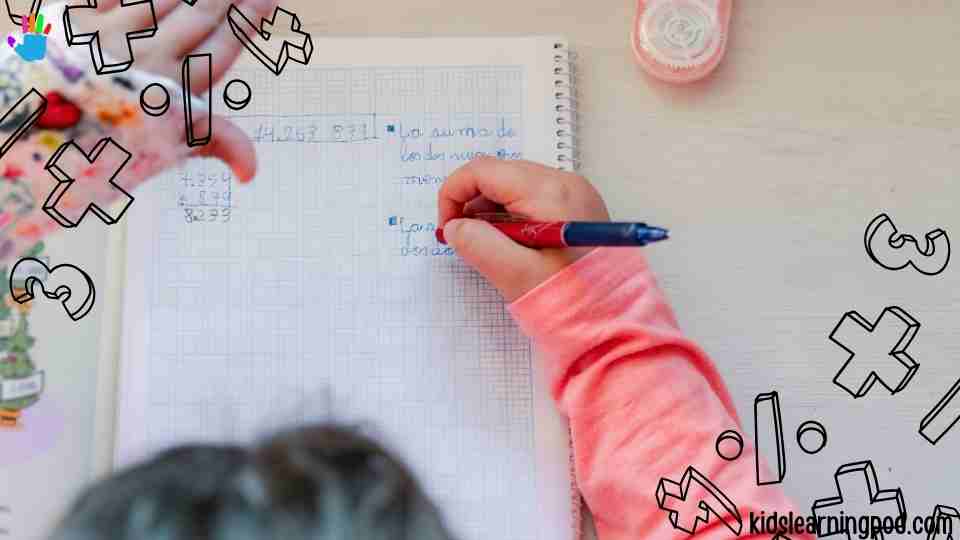
Mathematics
Importance of Math
Mathematics is a fundamental subject that helps develop critical thinking and problem-solving skills. It is essential for daily life and provides the foundation for many future career paths, particularly in science, technology, engineering, and mathematics (STEM) fields.
Best Math Resources
There are numerous resources available for teaching math in a homeschool setting. Popular choices include Khan Academy, Math-U-See, and Singapore Math. These programs offer comprehensive lesson plans, interactive exercises, and assessments to ensure a thorough understanding of mathematical concepts.
Science
Importance of Science
Science education fosters curiosity and a deeper understanding of the natural world. It encourages children to ask questions, conduct experiments, and develop analytical skills. A strong foundation in science is crucial for many careers and helps children make informed decisions about health, the environment, and technology.
Best Science Resources
For science education, resources like Mystery Science, Apologia, and The Good and the Beautiful provide engaging and comprehensive curricula. These programs include hands-on experiments, interactive lessons, and detailed explanations of scientific concepts.
Supplementary Subjects

Art and Music
Incorporating art and music into a homeschool curriculum enriches a child’s educational experience. These subjects encourage creativity, self-expression, and cultural awareness. Resources like Artistic Pursuits and Music in Our Homeschool offer structured lesson plans and activities to help parents teach these subjects effectively.
Physical Education
Physical education is essential for a child’s overall health and well-being. It helps develop motor skills, coordination, and a lifelong appreciation for physical activity. Homeschool families can incorporate physical education through sports, dance, yoga, and other activities that promote fitness and healthy habits.
Foreign Languages
Learning a foreign language opens doors to new cultures and enhances cognitive abilities. Popular language programs for homeschoolers include Rosetta Stone, Duolingo, and The Learnables. These resources offer interactive lessons, vocabulary exercises, and opportunities for practice and immersion.
Choosing the Right Curriculum

Assessing Your Child’s Learning Style
Understanding your child’s learning style is crucial when selecting a homeschool curriculum. Some children thrive with visual aids and hands-on activities, while others excel with reading and writing tasks. Observing how your child learns best can help you choose resources and methods that will keep them engaged and motivated.
Setting Educational Goals
Establishing clear educational goals is essential for creating a successful homeschool curriculum. Consider what you want your child to achieve academically, socially, and personally. These goals will guide your homeschool curriculum choices and help you measure progress throughout the school year.
Resources for Homeschool Curriculum
Online Platforms
Online platforms like Time4Learning, Edmentum, and ABCmouse offer comprehensive homeschool curricula covering various subjects and grade levels. These platforms provide structured lesson plans, interactive activities, and assessments to support your child’s learning.
Local Homeschool Groups
Joining local homeschool groups can provide valuable support and resources for your homeschooling journey. These groups often organize field trips, co-op classes, and social activities, creating opportunities for your child to interact with peers and learn from different instructors.
Educational Publishers
Educational publishers like Pearson, Houghton Mifflin Harcourt, and Scholastic offer a wide range of homeschool curricula and resources. These publishers provide high-quality materials that cater to different learning styles and grade levels, ensuring a well-rounded education for your child.
Customizing Your Homeschool Curriculum
Mixing and Matching Different Approaches
One of the benefits of homeschooling is the freedom to customize your curriculum. Mixing and matching different approaches and resources can create a unique and personalized learning experience for your child. Experiment with various methods to find what works best for your family.
Incorporating Hands-On Learning
Hands-on learning activities can make homeschooling more engaging and effective. Incorporate experiments, projects, and field trips into your curriculum to provide practical experiences that reinforce academic concepts. This approach can help children retain information and develop a deeper understanding of the material.
Homeschool Curriculum for Visual Learners
If you’re looking to tailor your homeschooling approach to your child’s unique learning style, be sure to check out our comprehensive guide on the Best Homeschool Curriculum for Visual Learners. This resource is packed with insights on how to create an engaging and effective educational experience for visual learners. Plus, we’ve compiled a fantastic free resources pack that you can download, featuring top-notch tools to enhance your homeschooling journey. Don’t miss out on these invaluable materials that can transform your teaching strategy and help your child thrive.
Planning Your Homeschool Year
Daily Scheduling
Creating a daily schedule helps establish a routine and ensures that all subjects are covered consistently. Flexibility is key, but having a basic framework for each day can help keep your homeschool on track and prevent burnout.
Weekly and Monthly Planning
In addition to daily schedules, planning on a weekly and monthly basis can help you stay organized and focused on your educational goals. Review your progress regularly and make adjustments as needed to ensure your child is meeting their learning objectives.
Assessing Progress in a Homeschool Curriculum

Regular Testing and Quizzes
Regular testing and quizzes can help you assess your child’s understanding of the material and identify areas that may need additional attention. Use a variety of assessment methods, including written tests, oral presentations, and hands-on projects, to get a comprehensive view of your child’s progress.
Keeping a Homeschool Portfolio
Maintaining a homeschool portfolio is an excellent way to document your child’s learning and achievements. Include samples of their work, test scores, and records of activities and field trips. This portfolio can be useful for tracking progress and meeting state requirements for homeschooling.
Challenges of Homeschool Curriculum

Managing Time Efficiently
One of the biggest challenges of homeschooling is managing time efficiently. Balancing teaching responsibilities with household chores, work, and other commitments can be overwhelming. Establishing a routine and setting realistic goals can help you manage your time effectively.
Addressing Socialization Concerns
Socialization is a common concern for homeschooling families. However, there are many ways to ensure your child interacts with peers and develops social skills. Join local homeschool groups, participate in community activities, and arrange playdates to provide opportunities for socialization.
Legal Requirements for Homeschooling
Understanding State Laws
Homeschooling laws vary by state, so it’s essential to understand the legal requirements in your area. Research your state’s homeschooling regulations and ensure you comply with any necessary paperwork, testing, or reporting requirements.
Filing the Necessary Paperwork
Some states require homeschool families to file an intent to homeschool, submit annual progress reports, or participate in standardized testing. Stay informed about your state’s requirements and keep thorough records to ensure compliance.
Success Stories and Testimonials
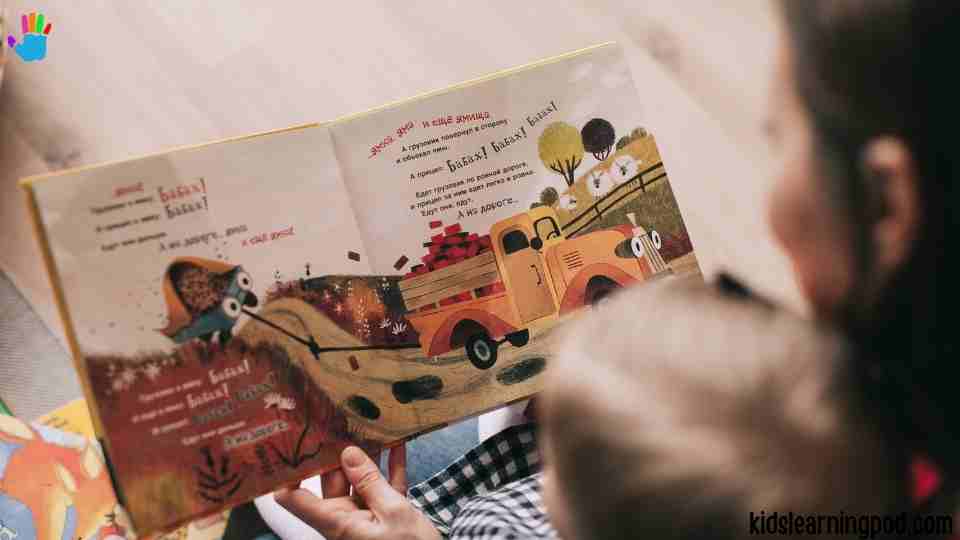
Real-Life Examples
Hearing about the experiences of other homeschooling families can be inspiring and reassuring. Many families have found success and fulfillment through homeschooling, and their stories can provide valuable insights and motivation.
Inspirational Experiences
“Homeschooling has allowed our family to travel the world while providing our children with a top-notch education. The flexibility and personalized approach have made all the difference.” – Sarah, homeschooling mom.
“We were initially hesitant about homeschooling, but it’s been the best decision for our family. Our children are thriving academically and socially, and we love the close bond we’ve developed.” – Mark, homeschooling dad.
Download Homeschool Curriculm
Kindly Allow Pop ups to let the Download Begin!

Download Year 1 Homeschool Curriculm
Download Year 2 Homeschool Curriculm
Download Year 3 Homeschool Curriculm
Download Year 4 Homeschool Curriculm
Download Year 5 Homeschool Curriculm
Download Year 6 Homeschool Curriculm
Homeschool Curriculum Picks
Conclusion
Creating a homeschool curriculum that meets your child’s unique needs and interests is a rewarding and fulfilling endeavor. By understanding the basics of homeschooling, exploring different types of curricula, and utilizing available resources, you can provide a high-quality education that fosters a love of learning. Remember, you’re not alone on this journey. Reach out to other homeschooling families, join local groups, and seek out expert advice to support your efforts.
Ready to get started? Want to Download our free sample curriculum to kickstart your homeschooling adventure today? Follow this link.
Which curriculum is best for homeschooling?
Another vital aspect in choosing a curriculum is considering the subjects and extracurricular activities it offers. For instance, if a child excels in science and technology, a curriculum that includes STEM education might be beneficial. Programs like Time4Learning or Oak Meadow provide a broad spectrum of subjects and are adaptable to different grade levels. Additionally, some families may prioritize curricula that offer religious education, such as Sonlight or My Father’s World, which integrate faith-based learning experiences. Therefore, evaluating the strengths and weaknesses of each curriculum and matching them to the student’s needs is key to finding the best homeschooling approach.
What is the most popular homeschool program?
Another highly regarded program is Khan Academy, which offers an extensive range of free resources across multiple subjects. Khan Academy is particularly well-known for its high-quality instructional videos and practice exercises that cover topics from basic arithmetic to advanced calculus. The self-paced nature of Khan Academy allows students to learn at their own speed, making it an excellent choice for both supplementary education and full homeschooling programs. Additionally, the mastery-based approach ensures that students gain a deep understanding of the material before moving on to more complex concepts. Together, these programs provide versatile options that readily cater to diverse homeschooling needs.
What is Montessori homeschool curriculum?
The Montessori curriculum covers a wide range of subjects, including math, language, science, geography, and cultural studies, all presented in a holistic and interconnected manner. Practical life skills, such as cooking, cleaning, and gardening, are also integral parts of the daily routine. Parents who choose Montessori homeschooling often create a prepared environment that is carefully organized to stimulate learning and foster independence. This method is particularly well-suited for younger children, typically up to age 12, but can be adapted for older students as well. The focus on individualized learning plans ensures that each child’s educational journey is tailored to their unique needs and abilities.
What is an all-in-one curriculum?
Such curricula are favored for their convenience and ease of implementation, especially for parents new to homeschooling or those who prefer a more streamlined and less time-consuming preparation process. Programs like Sonlight, Abeka, and Calvert offer all-in-one curricula that come with comprehensive lesson plans, textbooks, workbooks, and sometimes access to online resources and support. These packages ensure that all educational materials are aligned, providing a cohesive and systematic learning experience throughout the year. Additionally, all-in-one curricula often include assessment tools to help track the student’s progress and ensure they are meeting educational milestones.
What is the best age to start homeschooling?
However, some families opt to begin homeschooling at later stages, such as middle school or high school, especially if they are transitioning from a traditional school environment due to various reasons like academic struggles, social issues, or the need for a flexible schedule. These older students can still greatly benefit from the one-on-one attention and customized curriculum that homeschooling offers. Ultimately, the decision on when to start homeschooling should consider the child’s readiness, the parents’ preparedness, and the specific goals the family aims to achieve through homeschooling.
What is the hardest part of homeschooling?
Another challenge is the potential for isolation. Both parents and children can experience feelings of isolation due to the lack of a larger school community. This can be mitigated by participating in co-ops, joining homeschooling groups, or engaging in community activities, but it requires additional effort and planning. Moreover, maintaining motivation and consistency can also be difficult, as there are fewer external structures to provide accountability. Overcoming these hurdles often involves seeking support from other homeschooling families, leveraging online resources, and staying flexible in adapting teaching methods to fit the family’s evolving needs and circumstances.
How to choose a curriculum?
Parents should also assess their own teaching style and the level of involvement they want to have in their child’s education. Some curricula come with comprehensive lesson plans, while others require more flexibility and input from the parents. It is crucial to evaluate how much time and effort you are willing to invest in teaching before selecting a curriculum.
Another factor to consider is the educational philosophy or approach of the curriculum. There are various methodologies like traditional, classical, Montessori, or Charlotte Mason that cater to different learning styles and goals. Researching these approaches can give insight into which curriculum aligns best with your beliefs and objectives for your child’s education.
Lastly, it is essential to read reviews and gather recommendations from other homeschooling families. Seeking advice and insights from those who have used the curriculum can provide valuable information on its effectiveness and compatibility with your family’s needs. Ultimately, finding a curriculum that meets the child’s academic needs, aligns with the parents’ teaching style, and fits into the family’s overall goals is key to a successful homeschooling experience. So, it is important to take time to research and evaluate different options before making a decision. With proper planning and consideration of these factors, you can choose a curriculum that sets your child up for success in their educational journey through homeschooling.
